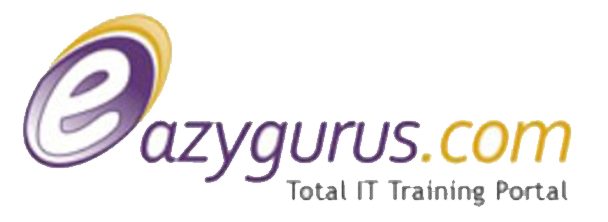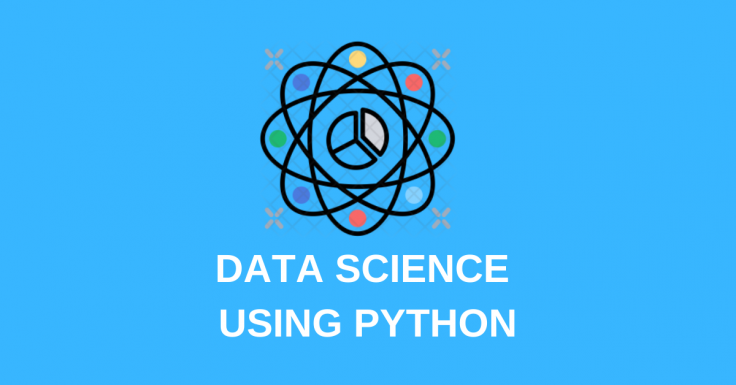COURSE : DATA SCIENCE USING PYTHON | ONLINE TRAINING | DURATION : 40 HOURS
ABOUT COURSE
Data Scientist is a person who employs various methods and tools to extract meaningful data . They deal with huge amounts of data and make predictions using statistical concepts. They have to formulate and write queries and derive information from raw data.
At EazyGurus we begin with learning in detail about inferential statistics. Proceeding further we learn process of data science workflow. We learn bow to collect, explore, model and validate data using various prediction analysis tools.
Course Objective
- To learn key features of Data Science.
- ‘Understand the probability distributions in details.
- Working with real time problems.
- To work on data handling concepts.
- Working on integrating with other tools.
Career Opportunities in Data Scientist
With the popularity of Big Data increasing exponentially, opportunities as Data Scientist / architects has been growing in all major industry sectors .etc. Training programs on Data Science technology by EazyGurus focuses on empowering the students with the latest concepts and industry specific topics. Our well experienced trainer and well planned course materials ensures for 100% success in interviews.
Who can learn?
Targeted Audience
- Software Developers
- Statisticians
- College / Fresher’s with statistics and math background
- Statistics Professionals
Prerequisite to learn the course
Experience in Statistics Machine Language will help becoming Data Scientist. Understanding business and domain concepts would be added advantage. Basic Python programming concepts will come in handy. Knowledge in BigData would also be helpful.
Course Syllabus
Introduction and Setting Up Your Integrated Analysis Environment
Setting Up Your Integrated Analysis Environment & Tools Overview
- IPython Shell
- Custom environment settings
- Jupyter Notebooks
- Script editor
- Packages: NumPy, SciPy, scikit-learn, Pandas, Matplotlib, Seaborn, etc.
Once you complete this module, you will understand some of the unique benefits of using Python for data science / what features make Python particularly well-suited for data science, you will be able to set up a fully functioning Python-based analysis environment, and you will know what each tool is used for in the data science workflow.
Using Python to Control and Document Your Data Science Processes
Python Essentials
- Data types and objects
- Loading packages, namespaces
- Reading and writing data
- Simple plotting
- Control flow
- Debugging
- Code profiling
Once you complete this module, you will be able to use the Python standard library plus Canopy tools to write, run, debug, and profile programs that control your data science processes (which draw on the scientific packages).
Accessing and Preparing Data
Acquiring Data with Python
- Loading from CSV files
- Accessing SQL databases
Cleansing Data with Python
- Stripping out extraneous information
- Normalizing data
- Formatting data
Once you complete this module, you will know how to load data from common types of data sources, including structured text files and SQL databases. and you will know some of the common tools used in Python to cleanse and prepare your data for analysis.
Numerical Analysis, Data Exploration, and Data Visualization with NumPy Arrays, Matplotlib, and Seaborn
NumPy Essentials
- The NumPy array
- N-dimensional array operations and manipulations
- Memory mapped files
Data Visualization
- 2D plotting with Matplotlib
- Advanced data visualization with Seaborn
Once you complete this module, you will understand how to use NumPy arrays for efficient numerical processing and how to use NumPy methods such as slicing to write code that is both compact and easy to read and understand. You will know how to use Matplotlib, Seaborn, and NumPy together to explore and visualize your data.
Exploring Data with Pandas
Searching for Gold in a Pile of Pyrite
- Data manipulation with Pandas
- Statistical analysis with Pandas
- Time series analysis with Pandas
At the end of this module, you will know how to access some of the core tools used for statistical analysis and data exploration in Python.
Machine Learning with scikit-learn
Predicting the Future Can Be Good for Business
- Input: 2D, samples, and features
- Estimator, predictor, transformer interfaces
- Pre-processing data
- Regression
- Classification
- Model selection
At the end of this module you will have a working understanding of what machine learning tools are available in scikit-learn and how to use them.


